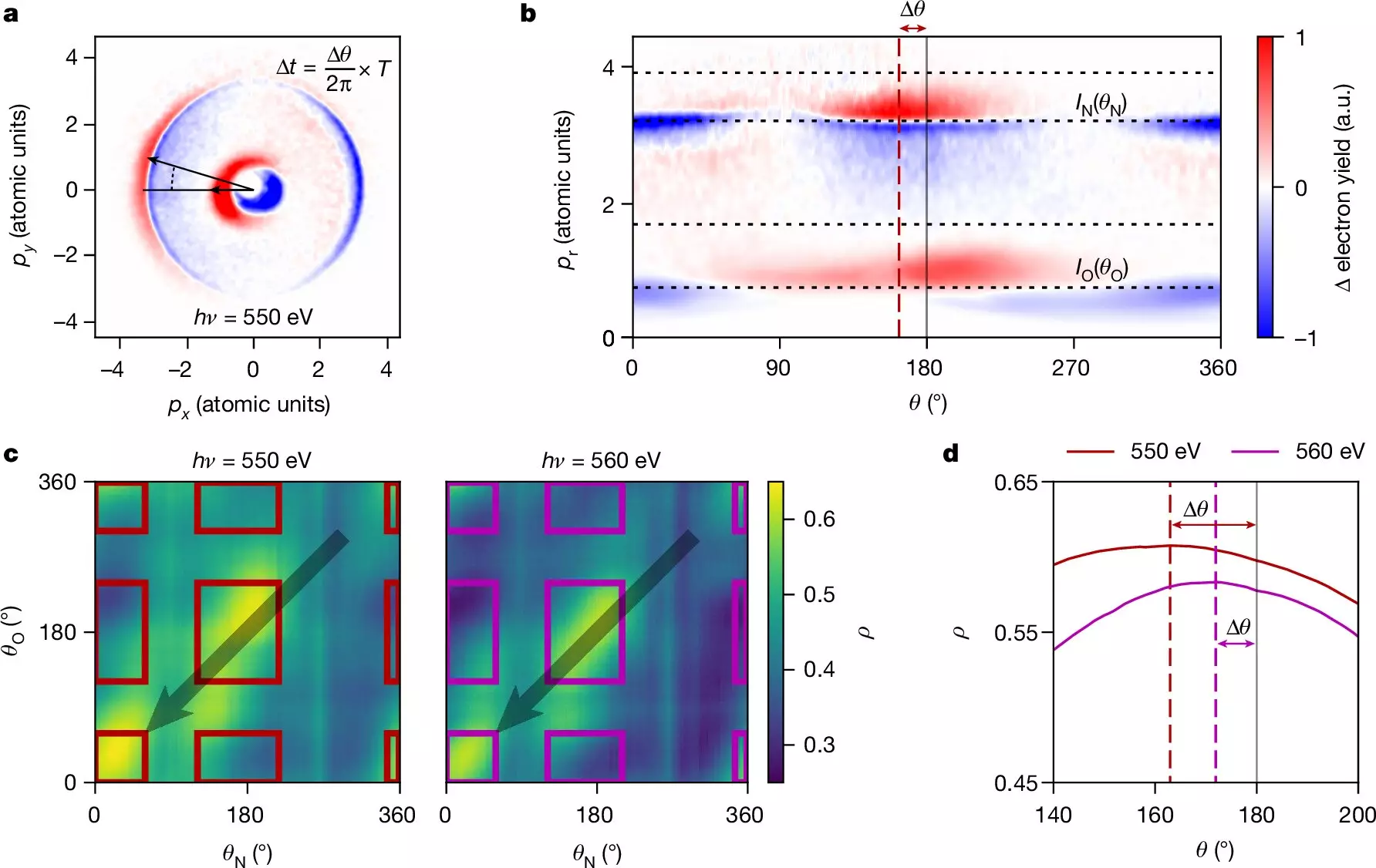The photoelectric effect, a phenomenon first described by Albert Einstein over a century ago, has been a fundamental concept in the field of quantum mechanics. When an atom or molecule absorbs a photon of light, it can emit an electron in a process known as photoemission. Recent advancements in attosecond science have provided scientists with the tools necessary to study the ultrafast time delays involved in this process, allowing for a deeper understanding of electron-electron interactions.
A team of scientists from the Department of Energy’s SLAC National Accelerator Laboratory has made significant progress in measuring these delays in the X-ray domain. Their research, published in Nature, utilized an attosecond X-ray pulse from SLAC’s Linac Coherent Light Source (LCLS) to ionize core-level electrons, ejecting them from the molecules under study. By using a separate laser pulse to measure the “photoemission delay,” the team was able to uncover delays reaching up to 700 attoseconds, challenging existing theoretical models.
The researchers also found that interactions between electrons played a crucial role in determining the photoemission delay. By measuring the angular difference in the direction of the emitted electrons, they were able to determine the time delay with high precision. This new understanding opens up new avenues for analyzing experimental results in fields like protein crystallography and medical imaging, where X-ray interactions with matter are essential.
This study represents just the beginning of a series of planned experiments aimed at exploring electron dynamics in various molecular systems. Other research groups are already utilizing the developed technique to study larger and more complex molecules, revealing new insights into electron behavior and molecular structure. The flexibility of LCLS allows scientists to probe a wide range of energies and molecular systems, making it a valuable tool for making these types of measurements.
The recent research by the team at SLAC National Accelerator Laboratory has provided valuable insights into the photoelectric effect and electron-electron interactions. By measuring the ultrafast time delays involved in photoemission, scientists are moving closer to fully understanding the dynamics underlying this fundamental process. The discoveries made in this study have the potential to impact a wide range of fields, from semiconductor technology to medical imaging, paving the way for future breakthroughs in electron dynamics research.


Leave a Reply